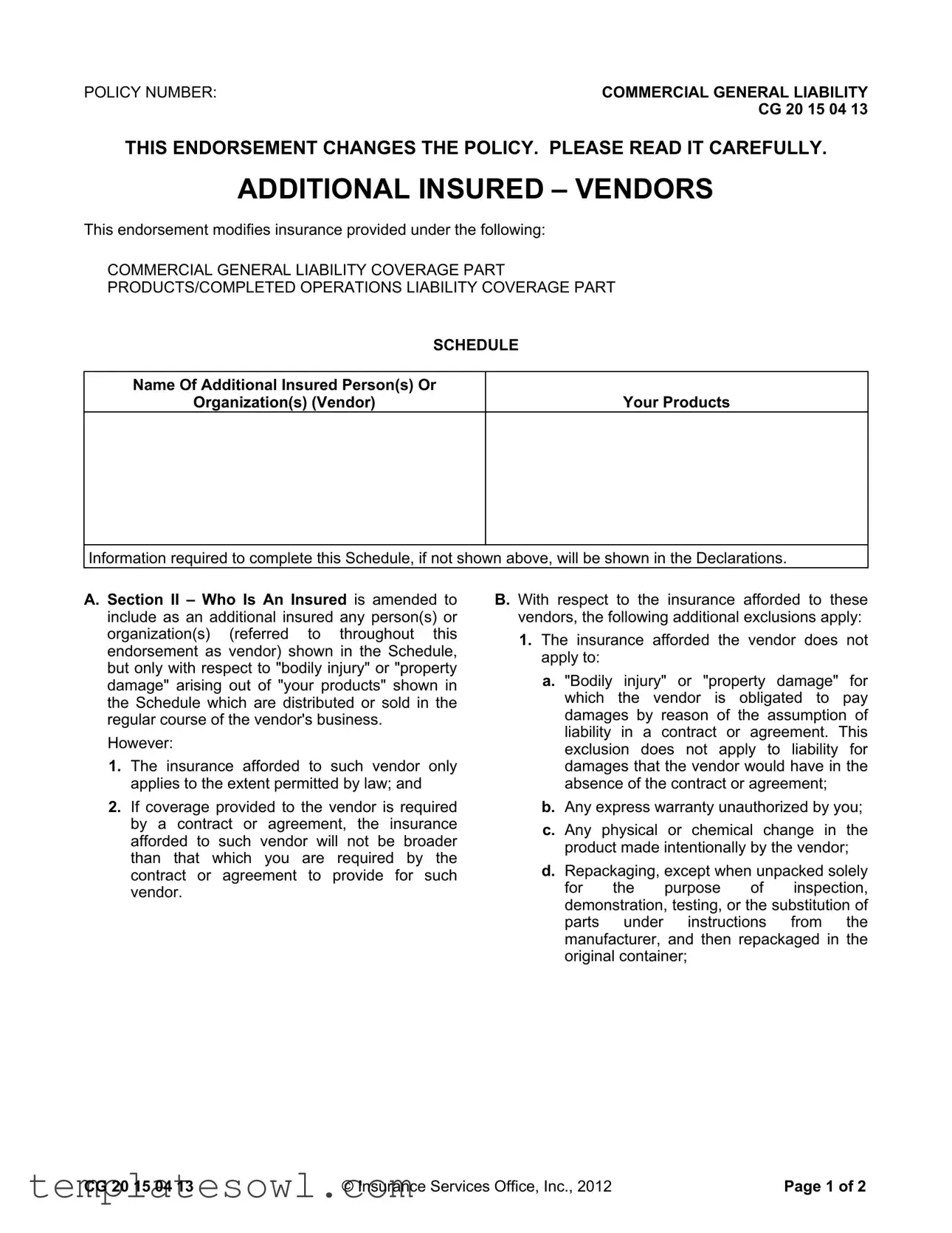What is the purpose of the Additional Insured Vendors form?
The Additional Insured Vendors form allows businesses to include specific vendors as additional insureds under their commercial general liability insurance policy. This inclusion provides vendors coverage for bodily injury or property damage related to your products that they distribute or sell, subject to certain limitations and exclusives.
Who is considered an additional insured under this form?
An additional insured under this form is any person or organization specified in the schedule section of the endorsement. This additional insured status applies strictly in scenarios where bodily injury or property damage arises out of your products as listed in the schedule and is related to the vendor’s typical business operations.
Under what conditions does the coverage apply?
The coverage applies only to the extent permitted by law. Additionally, if a contract or agreement requires coverage for the vendor, the insurance provided will not exceed the scope dictated by that contract or agreement.
Are there specific exclusions listed in the endorsement?
Yes, several exclusions apply. Notably, coverage does not extend to bodily injury or property damage for which the vendor is liable due to assumed contractual obligations. Other exclusions include any unauthorized warranties by the vendor, changes to products, repackaging issues, and negligence solely attributed to the vendor.
What happens in case of a product being labeled or relabeled by the vendor?
Insurance coverage does not apply to products that, after being distributed or sold by you, have been relabeled or used as components in other products by the vendor. This restriction seeks to prevent issues arising from alterations made after the initial sale.
How does this endorsement affect insurance limits?
The endorsement does not increase the overall limits of insurance shown in your declarations. If coverage is required by contract, the maximum payout for the vendor will be the lower of the contract-required amount or the applicable limits in your policy declarations.
Can vendors expect coverage for their own negligence?
Not typically. Coverage does not apply to bodily injury or property damage arising solely from the vendor's own negligence. However, specific activities, such as inspections and servicing that the vendor is contractually bound to perform, may still be covered under certain conditions.
Is the vendor required to be named on the policy for coverage to apply?
Yes, vendors must be explicitly named in the schedule section of the endorsement for the additional insured status to take effect. Coverage does not automatically extend to all vendors without proper documentation in the insurance policy.
What should businesses do if they have additional questions about the form?
Businesses should consult with their insurance agents or legal advisors to clarify specific points regarding the Additional Insured Vendors form. Understanding the nuances of coverage and exclusions is essential for effective risk management.

